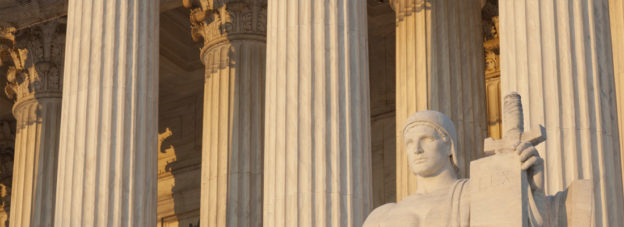The North Carolina workers’ compensation subrogation statute does not permit employers or their compensation insurers to claim a “future credit” against future exposure.1 In this respect, North Carolina departs from the classic rule in the overwhelming majority of jurisdictions.2
Despite this minority position as to future credit, however, the North Carolina Workers’ Compensation Act does require courts to consider workers’ compensation insurers’ future “exposure” when determining if and how much of the insurer’s lien will be paid back.3 An insurer’s future exposure represents just one of the many factors courts are bound by statute to consider when determining the appropriate amount of the insurer’s lien.4
But let’s take a step back. The process of determining the appropriate amount of the insurer’s lien generally involves two layers of analysis. The process, naturally, is commenced at the time a third party settlement is reached or judgment is awarded.5
Settlement or judgment in hand, the injured worker and the insurer are encouraged to agree on how to reimburse the insurer’s lien.6 But if mutual agreement breaks down, either the worker or the third party tortfeasor can petition the appropriate Superior Court judge to determine the insurer’s recovery, after an opportunity for all parties to be heard on the merits.7 Under the latter scenario, the insurer’s consent is irrelevant since the Superior Court judge decides the issue.8
The first layer of analysis for the judge is determining the lien amount, “whether based on accrued or prospective workers’ compensation benefits[.]” If any benefits have been paid at the time of the settlement or judgment, the judge takes a snapshot to determine the lien amount.10 An insurer’s future exposure for purposes of this first layer of analysis is, therefore irrelevant, unless at the time of the settlement or judgment, for whatever reason, benefits have not yet been paid.
An insurer’s future exposure only becomes relevant in the second layer of analysis, whereby the judge takes the lien snapshot and determines how much of the lien, if any, will actually be paid back.11 At this level of analysis, judges weighing the subsection (j) factors are given virtually unassailable discretion to either reduce or eliminate an insurer’s lien,12 “even if the result is a double recovery for the plaintiff.”13
There is, of course, no magic mathematical formula for the trial court to consider in making its lien reimbursement determination.14 The exercise of discretion simply requires the court to “make a reasoned choice, a judicial value judgment, which is factually supported.”15
If a workers’ compensation insurer has only paid minimal benefits, but has tremendous future exposure, it would stand to reason that the insurer should be able to secure full reimbursement of its lien.16 This is only fair since the insurer’s future exposure will go, as a matter of law, unreimbursed. But if the worker’s injuries are catastrophic, and the worker has to self-fund a decades-long life-care program, for example, one would be hard-pressed to find a North Carolina judge willing to exalt an insurer’s lien over the worker’s personal, financial obligations.
Thus while there is no future credit in North Carolina, the court’s obligation to consider a workers’ compensation insurer’s future exposure may, depending on the factual circumstances, serve as a safeguard against unfair lien reduction or outright elimination.
1 N.C. GEN. STAT. § 97-10.2.
2 See, e.g., Bailey v. Reliance Ins. Co., 94 Cal.Rptr.2d 149, 153 (Cal. Ct. App. 2000) (observing that under CAL. LABOR CODE §§ 3858 and 3861 subrogated workers’ compensation insurer was “entitled to a credit against future benefits based on the amount the third parties paid” to injured worker).
3 See N.C. GEN. STAT. § 97-10.2(j) (“The judge shall consider the anticipated amount of prospective compensation the employer or workers’ compensation carrier is likely to pay to the employee in the future, . . .”).
4 See id. at 97-10.2(j) (listing lien reimbursement factors).
5 See Leggett v. AAA Cooper Transp., Inc., 678 S.E.2d 757, 760 (N.C. Ct. App. 2009) (“[Section 97-10.2(j)] grants limited jurisdiction to the superior court to determine the amount of the employer’s lien in the event the employee receives compensation from a third-party judgment or settlement.”).
6 N.C. GEN. STAT. § 97-10.2(h).
7 Id. at § 97-10.2(j). Curiously, as one federal district court reviewing the North Carolina Workers’ Compensation Act has observed: “There is no provision in § 97-10.2(j) recognizing a separate cause of action by an employer to determine the subrogation amount, and no North Carolina state court cases have addressed the ability of an employer to bring a separate cause of action in state court pursuant to this provision. Thus, there appears to be an unresolved question of state law. . . .” Safety Nat. Cas. Ins. Corp. v. City of Burlington, 2006 WL 399675, *5 (M.D.N.C. 2006).
8 See id. (“After notice to the employer and the insurance carrier, after an opportunity to be heard by all interested parties, and with or without the consent of the employer, the judge shall determine, in his discretion, the amount, if any, of the employer’s lien. . . .”) (emphasis added).
9 Id. at § 97-10.2(j).
10 Compare Johnson v. Southern Indus. Constructors, Inc., 495 S.E.2d 356, 359 (N.C. 1998) (Lake, J., for the majority) (“[The] wording [of N.C. GEN. STAT. § 97-10.2(j)] clearly indicates that the comparison between the compensation benefits paid and the judgment is to be made at the precise time the “judgment is obtained.”), with id. at 362 (Frye, dissenting) (“The carrier’s right to subrogation does not cease to accrue at the precise moment that the judgment is obtained. Rather, it continues as to all benefits to be paid in the future by the employer under award of the Industrial Commission. It is therefore inequitable to deny the existence of that component of the subrogation claim. . . .”) (emphasis in original).
11 See, e.g., Wynter v. County of Wake, 2011 WL 2462669, *5 (N.C. Ct. App. 2011) (concluding that Superior Court properly considered workers’ compensation insurer’s future exposure to determine that such insurer was entitled to full reimbursement of its subrogation lien).
12 See N.C. GEN. STAT. § 97-10.2(j) (providing Superior Court judges catch-all “just and reasonable” discretion when determining lien reimbursement). See also Leggett v. AAA Cooper Transp., Inc., 678 S.E.2d 757, 761 (N.C. Ct. App. 2009) (citation omitted) (“The trial court may reduce or completely eliminate a workers’ compensation lien if warranted by the facts, and this Court may not interfere absent an abuse of discretion.”).
13 Estate of Bullock v. C.C. Mangum Co., 655 S.E.2d 869, 874 (N.C. Ct. App. 2008) (citation omitted).
14 In re Biddix, 530 S.E.2d 70, 71 (N.C. Ct. App. 2000).
15 Cook v. Lowe’s Home Centers, Inc., 704 S.E.2d 567, 570 (N.C. Ct. App. 2011) (quoting Allen v. Rupard, 397 S.E.2d 330, 333 (N.C. Ct. App. 1990)).
16 See generally Wynter v. County of Wake, 2011 WL 2462669 (N.C. Ct. App. 2011).
This entry was posted in 

